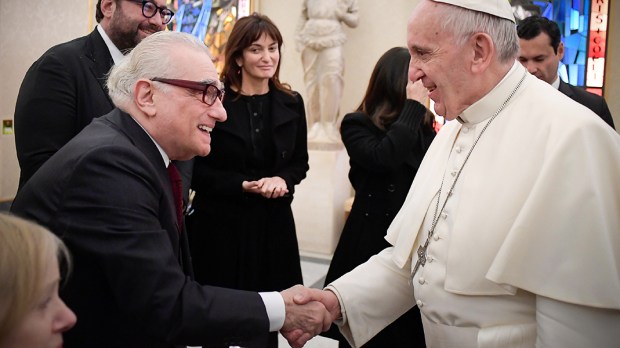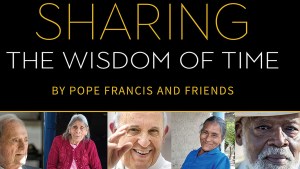Lenten Campaign 2025
This content is free of charge, as are all our articles.
Support us with a donation that is tax-deductible and enable us to continue to reach millions of readers.
What David Cronenberg is to horror, Scorsese is to faith. That is, both directors take a blunt, unapologetic approach to the many violent, uncertain, obscure intricacies of everyday life. But whereas Cronenberg’s nightmarish use of violence is a response to the viewer’s desensitization to it (the byproduct of non-critical, continuous media exposure, the director would often say), Scorsese’s is but a striving for salvation. At least, according to Dr. Arturo Serrano (University of London, 2008), a specialist in Scorsese’s filmography, chair of the cinema department at TAI, the Academic School of the Arts in Madrid, Spain.
“It might sound naïve,” Serrano explains, “but what Scorsese is looking for is salvation, yet not the “saintly” kind we might be used to. His is a “street” version of it. That is the reason why I say that Scorsese’s cinema is a kind of layman’s soteriology.” In laymen’s terms, that is, a kind of doctrine of salvation. Needless to say, his is not precisely an orthodox Catholic one.
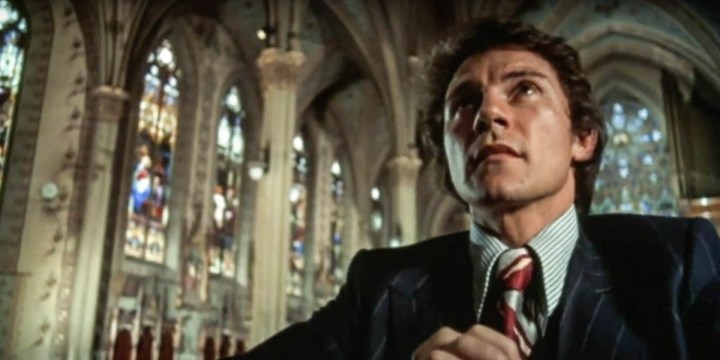
Scorsese is surely one of the most influential directors in film history. His oeuvre can be said to be a constant exploration of the same fundamental themes: Italian-American identity, underground life, unrestricted violence, but it is also a reflection on some Catholic approaches to guilt, atonement, redemption, faith, and forgiveness. “I’m a lapsed Catholic. But I am Roman Catholic —there’s no way out of it,” the director himself said. That is to say, his personal take on these matters, although often insightful, might not go hand-in-hand with Catholic doctrine. In this interview, Dr. Serrano discusses some of the basic theological keys to unlock Scorsese’s “street soteriology.”
It goes without saying that The Last Temptation of Christ is far from being a Christian movie. However, during a press conference back in 2017, Scorsese said a studio executive asked him why he was so keen on making the film. It was not just because of his admiration of Kazantzakis. “To get to know Jesus better,” he blurted out. Could you summarize Scorsese’s “Christology” somehow? What is Scorsese’s take on Jesus?
This is a very complicated issue in Scorsese’s oeuvre. Just as in Christianity, in Scorsese’s works Jesus is a rather complex, paradoxical character in which humanity and divinity “cohabitate,” so to speak. We look at him to comfort ourselves when we lose our temper (after all, he lost it too in the Temple), but we also look at him for guidance, as to discover what God wants from us.
Scorsese’s Jesus is basically a man who doubts. There is this scene in The Last Temptation when we find Willem Dafoe (Jesus, that is) in the middle of the desert, and suddenly saying “…I think I feel him [God], but I’m never really sure.” What does God want from him? In fact, I have always thought that what attracted Scorsese to the character (Kazantzaki’s Jesus) was precisely this humanizing doubt —something we can easily relate to.
The phrase Scorsese uses to open the film clearly points towards this complexity: “The dual substance of Christ. The yearning, so human, so superhuman, of man to attain God has always been a deep inscrutable mystery to me.” When Judas asks Jesus why he is so contradictory in what he wants and says (one day he seems to be preaching violence, and the very next day, love), Jesus answers that he doesn’t know what God wants from him. Of course, this is but a dramatic exaggeration of what the Gospels actually suggest. In the Gospels, Jesus does know —so much he asks that cup to be taken away from him, if it is the Father’s will. That, you do not find in Scorsese.
Now, what Jesus’ greatness is really about, at least for Scorsese, lies in the fact that even in his most tormenting moment, he clings to love as the real answer to everything. When Judas tells him that “the tree is rotten and you have to take the axe to cut it down,” Jesus simply replies “if I were a woodcutter, I’d cut. If I were a fire, I’d burn. But I’m a heart and I love and that’s all I can do.”
In any case, I would say that the only way to really understand Scorsese’s Jesus is in relation to the other characters in his filmography, and especially those who, although not saint-like, are constantly struggling for salvation. J.R. (Who’s That Knocking at My Door), Charlie (Mean Streets), Travis (Taxi Driver), Christ (The Last Temptation of Christ), Jake La Motta (Raging Bull), Henry (GoodFellas), Sam Bowden (Cape Fear), Sam Rothstein (Casino), Frank (Bringing Out the Dead), Amsterdam (Gangs of New York) or Teddy (Shutter Island) are all characters who, although far from being saints, are surely trying to find redemption.
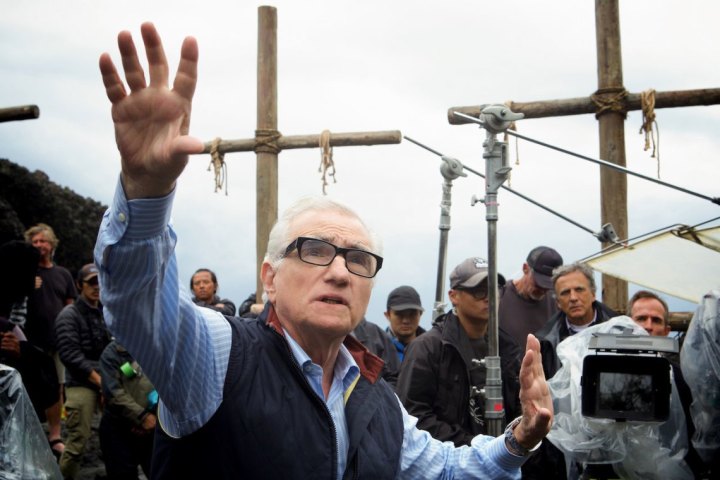
It is a well-known fact Scorsese was an altar server, as a kid, at Old Saint Patrick’s, in Mulberry St. That’s the church where we find Harvey Keitel praying in Mean Streets. Why do you think Scorsese insists on going from piety to sheer violence, and the other way around?
Scorsese does have a view of violence as playing an important role in religion. But the genesis of this view is in the Catholic tradition itself. It’s not something he just came up with. Think, for example, in the famous words of Cardinal Gabriele Paleotti (1522-1597): “listening to the narration of the martyrdom of a saint, the fervor and perseverance of a virgin, or the passion of Christ himself, is something that moves us from the inside; but having in front of our eyes, in bright colors, the tortured saint, the martyred virgin, and in another place Christ nailed to the cross, increases our devotion much more.” Just looking at the images we venerate in Catholic churches is enough to realize that violence (that is, being able to resist it, to endure it, or to fight it) plays an important role in the tradition.
In a way, Scorsese does nothing but give voice to a way of looking at religion that is embedded, for better or worse, in us Catholics. It is surprising to see online stores selling haircloth shirts and the like. Now, that aside, we should consider that which Paul called “the scandal of the Cross:” Christianity is a religion born out of the story of a man who was submitted to horrendous acts of torture. Christians are called to be able to recognize God in a man whose appearance is “disfigured beyond that of any human being, and his form marred beyond human likeness,” as read in Isaiah’s suffering servant.
As Giuseppe Barbaglio says in his book Dio, violento? “in the New Testament, the central occurrence is a monstruous bloody action: the murder of Jesus.” There is no escaping it: violence is there, somehow at the very core of Catholicism, in the tortured body of the Messiah. Scorsese is just a kind of spin-off of this very same topic: the violence of sacrifice and its potential redemptive power. That’s, at least in part, what all the violence in Taxi Driver points at.
Would you say at least some of that violence is a form of atonement? I’m thinking Raging Bull, for example. Is there a kind of baroque piety (with its stress on blood and the value of suffering) here at play? Is Scorsese’s take on pain somehow along these lines?
No doubt. Scorsese is constantly trying to find out what is the relation between the violence he finds in the streets (or in the ring, for that matter) and that elusive state of grace his characters seem to be constantly chasing. Scorsese doesn’t have a unified theory of grace or salvation, though. His views change constantly, from movie to movie. But we could at least differentiate two main moments in his work, regarding the relationship of violence and salvation. In the first moment, violence seems to be an inevitable part of squeezing redemption from a hard, tough life. That’s (broadly speaking) what we see from Who’s That Knocking at My Door up to Raging Bull).
Paul Schrader (who wrote the script for Taxi Driver, Raging Bull, The Last Temptation of Christ and Bringing Out the Dead) refers to this first moment as one of “pseudo-religious masochism,” in the sense that it stresses violence over the salvation that very same violence is supposed to bring about.
Then comes a new moment in which violence is no longer seen as the solution, but rather as the problem that needs to be solved. In fact, after Raging Bull, Scorsese eschewed violence for some time and didn’t work on any more violent films until 1990. That’s a whole decade.
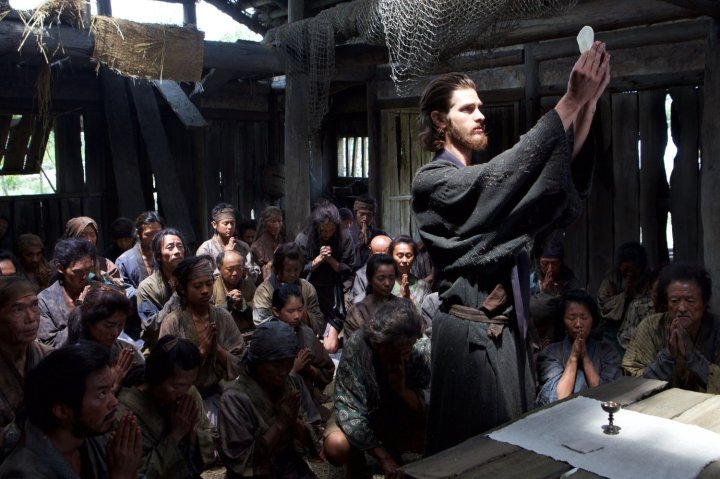
You ask about pain. But in Scorsese’s films blood, and not pain, is the distinctive mark of violence. His use of blood as a cleansing element goes hand in hand with some classical passages in Christian scriptures: “The law requires that nearly everything be cleansed with blood, and without the shedding of blood there is no forgiveness,” we read in the Letter to the Hebrews (9, 22). Now, think on what René Girard has to say on the matter: “Does there exist some miraculous substance potent enough not only to resist infection but also to purify, if need be, the contaminated blood? Only blood itself, blood whose purity has been guaranteed by the performance of appropriate rites –the blood, in short, of sacrificial victims- can accomplish this feat.” As Scorsese put is, “I like the idea of spurting blood… it’s like a purification, you know, the fountains of blood… it’s like a fountain, washing, the fountain, like in the Van Morrison song, you know. ‘Wash me’, you know, the whole idea of standing in the waterfall?” I would say that is his own version of Saint Ignatius’ prayer: “blood of Christ, inebriate me.”
Even if openly Catholic, Scorsese is certainly not doing apologetics. Not even with Silence. In fact, one could hardly label him as a Christian artist. What would you say he is then looking for?
Again, what Scorsese is looking for is salvation. Perhaps in all the wrong places. His main religious question is how are we supposed to be saved, how to obtain grace. What he doesn’t realize is that grace is not obtained but rather simply accepted. In the end, he has a very straightforward, and somewhat naïve, view of the whole thing: eternal life that comes from being good to others, period. But what makes things so difficult is that even if we are called to be good, our circumstances (social, political, economic, physical) and our own desires tend in the opposite direction. That’s classic Pauline drama, there: “what I do is not the good I want to do; no, the evil I do not want to do —this I keep on doing!”
Some have said The Irishman is a general confession. In fact, the film begins and ends with the main character confessing to a young priest. Would you say that is the case? Has Scorsese moved from atonement through suffering to atonement via storytelling-confessing?
I don’t think so. Confession isn’t a particularly important thing for Scorsese. His characters don’t achieve redemption by confessing, but by facing their demons and exposing themselves. Perhaps the reason why confession plays a role here is because the main character is Irish and not Italian. Those are quite different models of Christianity.
In fact, Scorsese shows contempt for confession when, in Mean Streets, Charlie says: “I’ve just come out of Confession and as a penance they gave me ten Hail Marys and ten Our Fathers. Now, between you and me, you know how I feel about such things. Hail Marys… Our Fathers… No imagination. If I’m going to do penance at all, I’ll do it the way I think it would be done by me, that is, according to my own trespasses. You know what I mean.”
Scorsese denies a ritualistic vision of religion (confession will cleanse your sins) in favor of this other, “masochistic” vision, in which it seems that violence itself is the instrument of redemption. So, what happens in The Irishman is that Scorsese recognizes that Irish Catholicism (Frank’s, that is) is definitely less violent, more ritualistic, way more “inner-driven.” Perhaps it is a resemblance [to] Scorsese’s own changes of perspective in religious matters.
